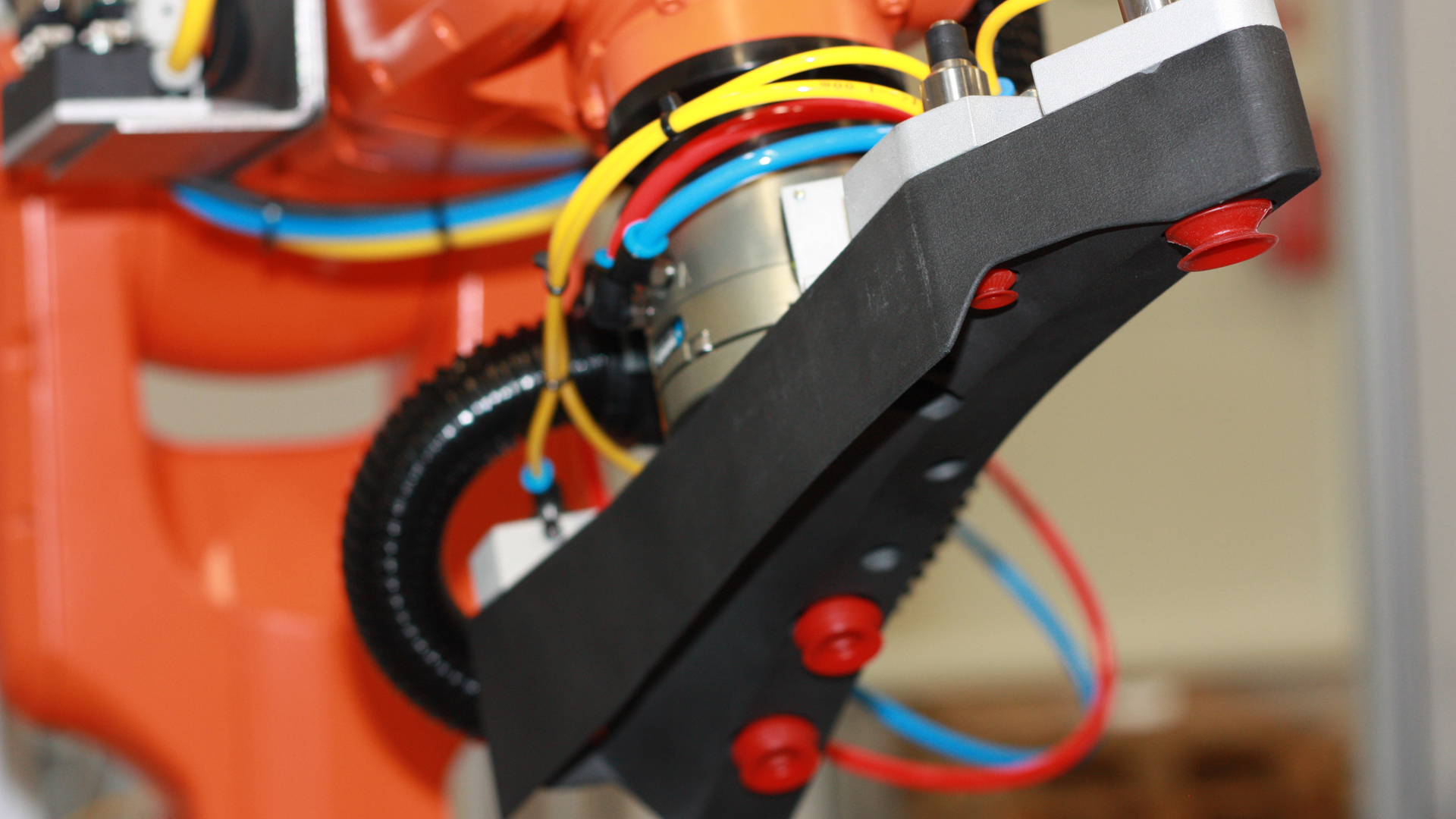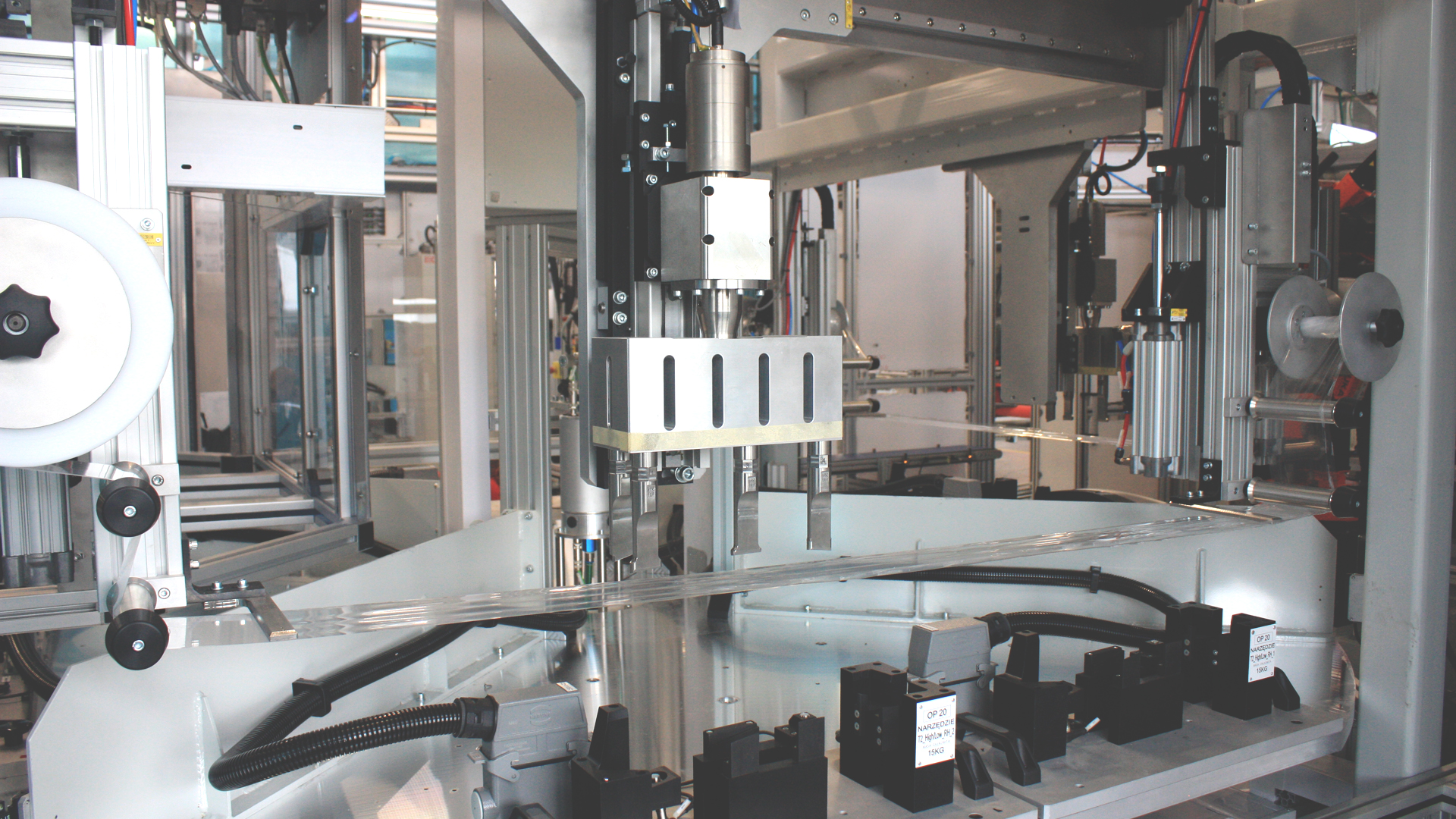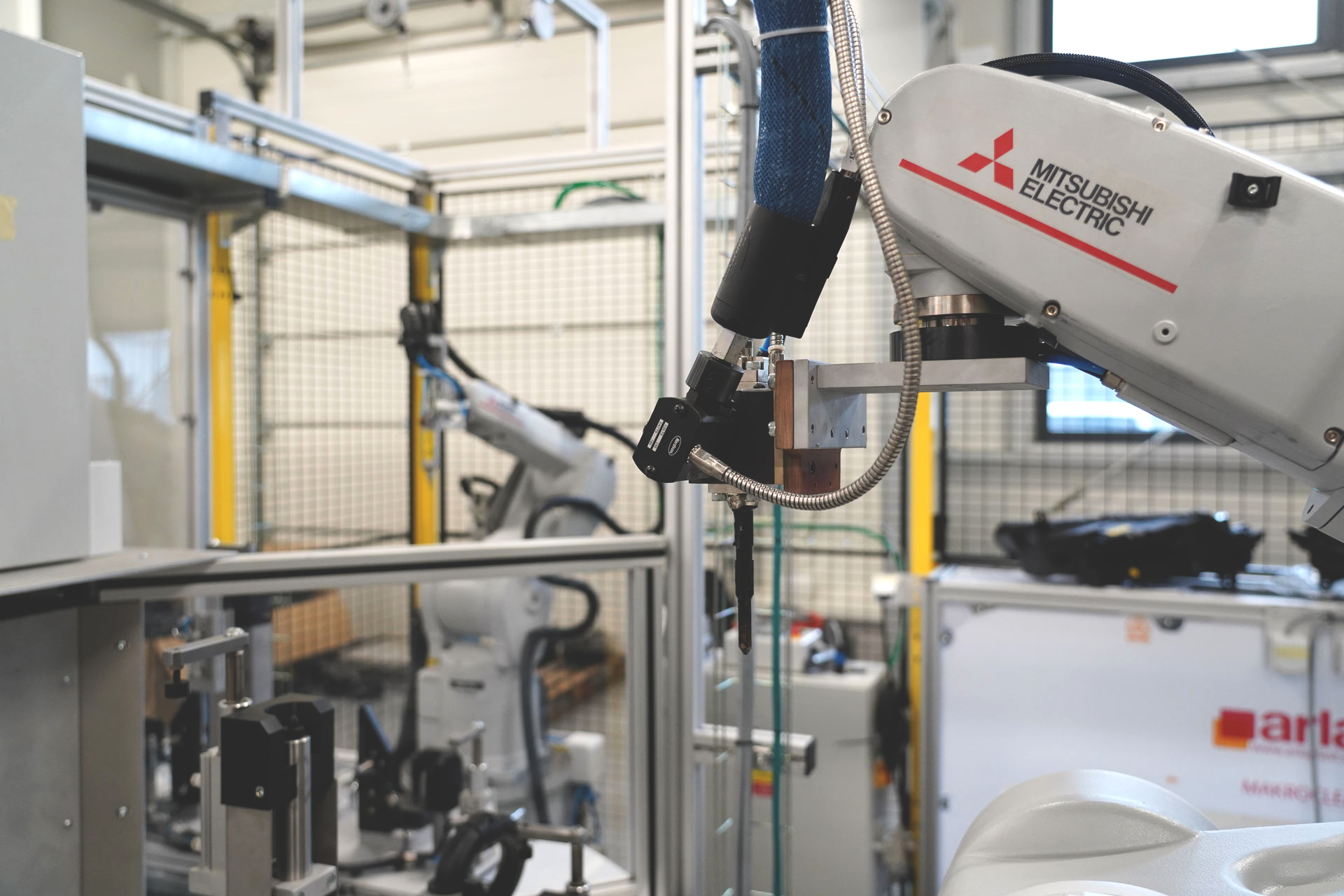Robotic assembly of car lights
Bartlomiej Juszczyk, 2023.03.01, Lines & machines
Lighting installed in cars is changing along with the development of the automotive industry. The initial Ford T models still used carbide lamps, but already in the 1920s, dynamos and electric bulbs began to be widely used. The supply medium in the form of electric current remained, but new types of light sources appeared, such as: halogen bulbs, xenon headlights and finally electroluminescent diodes (LED). LED spotlights have a large list of advantages, especially when it comes to energy efficiency, durability and light quality.
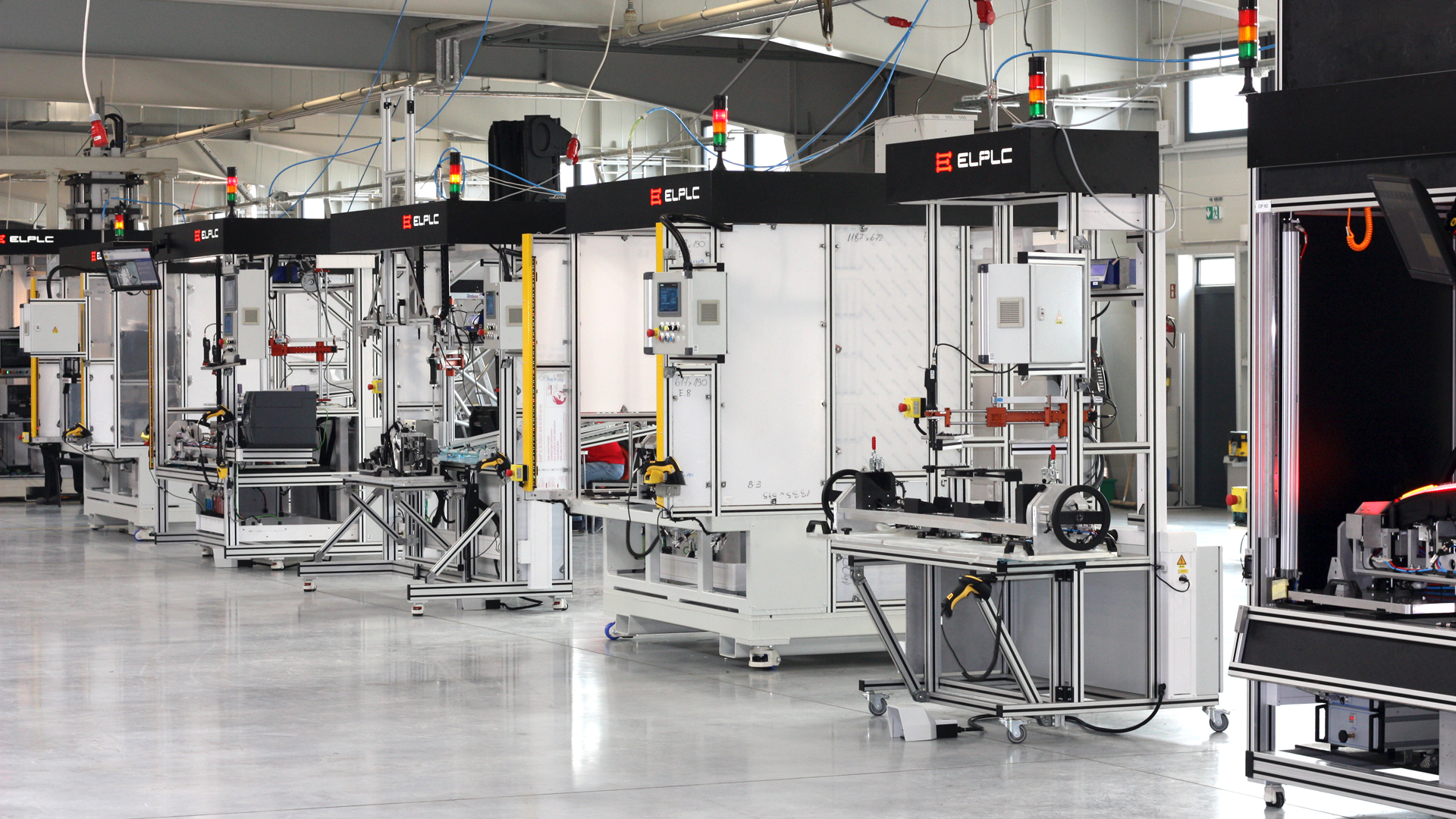
How are LED car lamps made?
Of course, individual models of lamps differ depending on the car brand, purpose or manufacturer of the lamp itself. The headlight housing houses the supporting frame, electronic control module, LED modules and cooling system. There can be up to several dozen diodes in the headlights. The control module can offer different lighting sequences for individual elements. All this is housed in a shade with appropriate lenses and a masking frame.
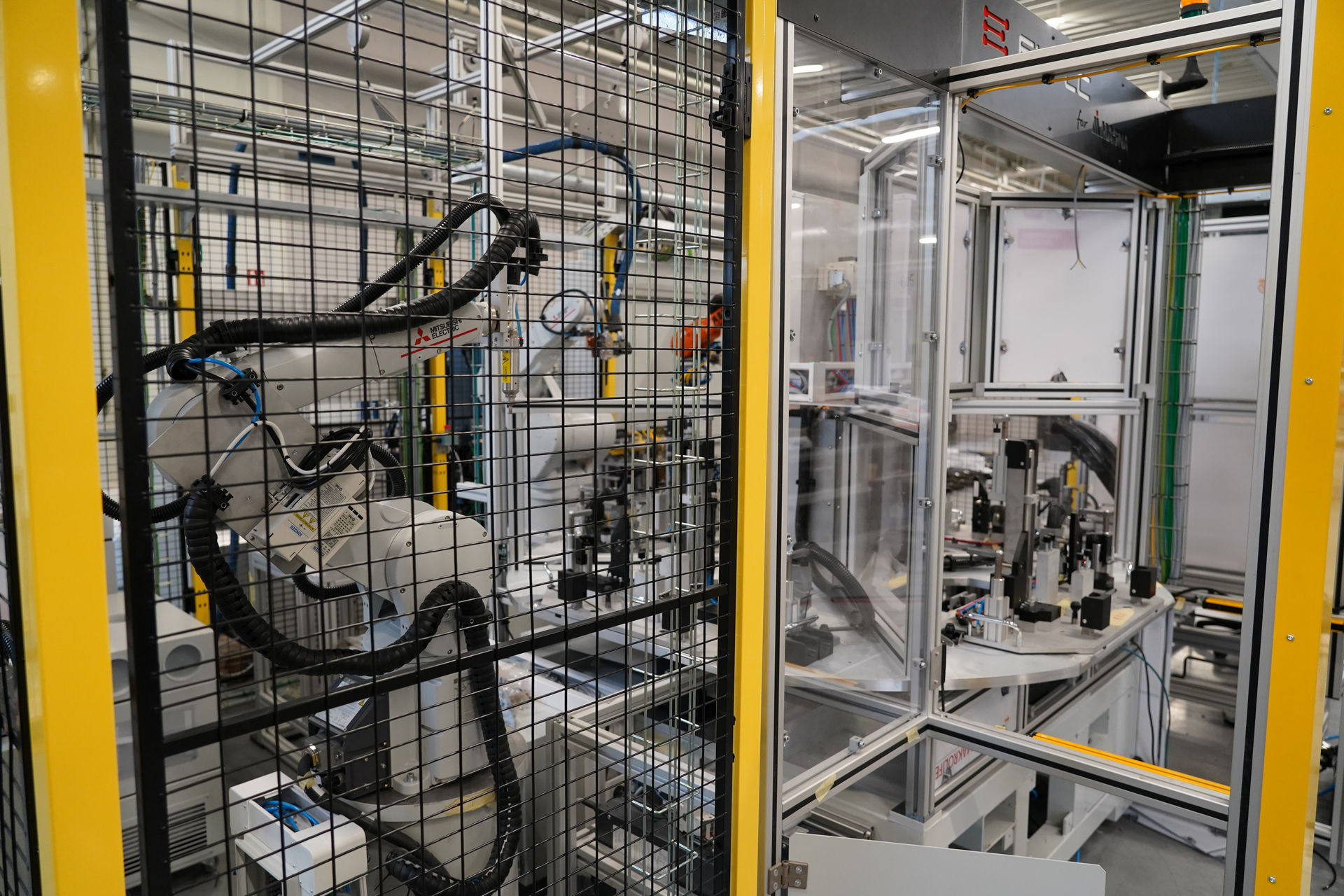
What processes are involved in the production of LED lights?
The basic issue is to have assembly lines adapted to the types of lamps produced. The designed stations must ensure the proper delivery of all components, the implementation of processes in the correct order and protection against ESD [1] where necessary. Several main groups of processes in the production of LED lights can be distinguished:
- placing, mounting and screwing,
- surface cleaning and treatment: plasma plating [2], blowing aith air ionization,
- annealing in furnace,
- welding, including ultrasound and infrared,
- gluing and sealing,
- label printing and application,
- leak testing, component presence testing, geometry check, lens gap check,
- vision testing of lamp functionality, electrical absorption of the finished lamp, luminescence.
Robotization
Some of the assembly operations are performed on manual stations, but equipped with automated screwdrivers in versions with a torque converter and a reaction arm. Components are fed on gravity slides or vibrating feeders, and screws with a dispenser. Many of these processes are worth automating and robotizing. Universal robots are used to reload the product between stations or nests, e.g. to pick up lamps from the furnace. Robots also work well in the gluing process, e.g. for surface preparation by plasma treatment or precise application of glue. An ultrasonic welding unit with a [3] sonotrode can be attached to the robot arm for precise positioning. A good example of robotization of lamp assembly, where 3 robots of different brands have been integrated, can be the lens application, plasma plating and gluing station, designed and built by ELPLC.
Light assembly lines from ELPLC
For several years, ELPLC has had complete assembly lines for car lights of various types in its portfolio. They include manual assembly stations, robotic stations with rotary tables, reloading robots and specialized EOL testers. Dedicated software supporting many testing methods was also developed for testers. It is a hardware-independent tool for managing the testing process centrally from the stand or remotely.
Full traceability thanks to ELPLC Smart Factory
The lines built by ELPLC are equipped with the proprietary ELPLC Smart Factory system. One of its functionalities is the availability of the full production history of each piece and the possibility of its analysis. It can be carried out in relation to various criteria and selected filters, e.g. efficiency analysis broken down by stations or operators. Data export is also available. Know more about ELPLC Smart Factory.
Footnotes
[1] ESD protection (Electro-Static Discarge) is a protection system for electronic components sensitive to electrostatic discharge.
[2] plasma treatment – impact on the surface with ionized gas, changing the chemical reactivity of surface atoms. A method of cleaning elements before the gluing process.
[3] sonotrode – the terminal device of the ultrasonic welding machine, its function is the final amplitude amplification and vibration energy transfer. The sonotrode is mechanically connected to a converter of electrical signals to vibration and an amplitude amplifier. Typical operating frequencies are 20, 30 or 35 kHz.
ELPLC SA machines and lines
We specialize in designing and building machines, complete robotic assembly lines and creating software for the industry. We offer our competences for many industries. We provide Industry 4.0 / Smart Factory solutions.
Automation and robotization
Machines and lines building
Modernization fo existing lines
Software for industry
Service and maintenanace
Research and development
Return to blog
Want to know more? Ask experts





